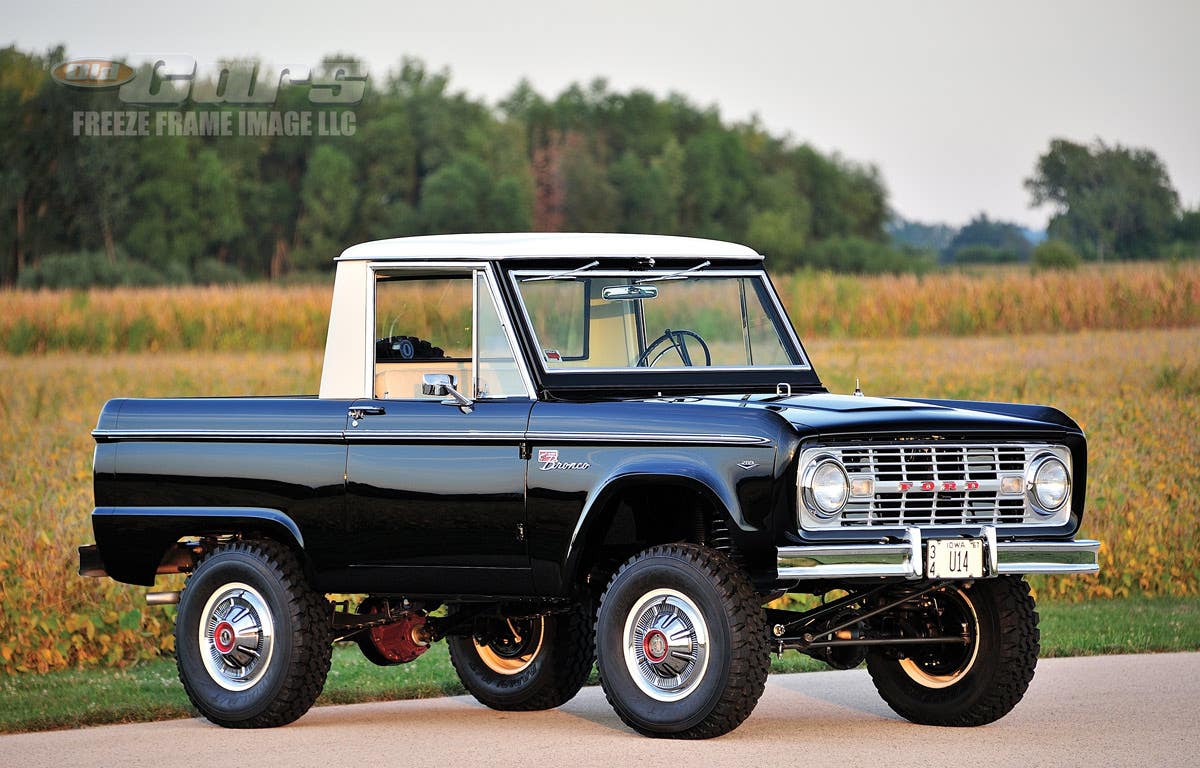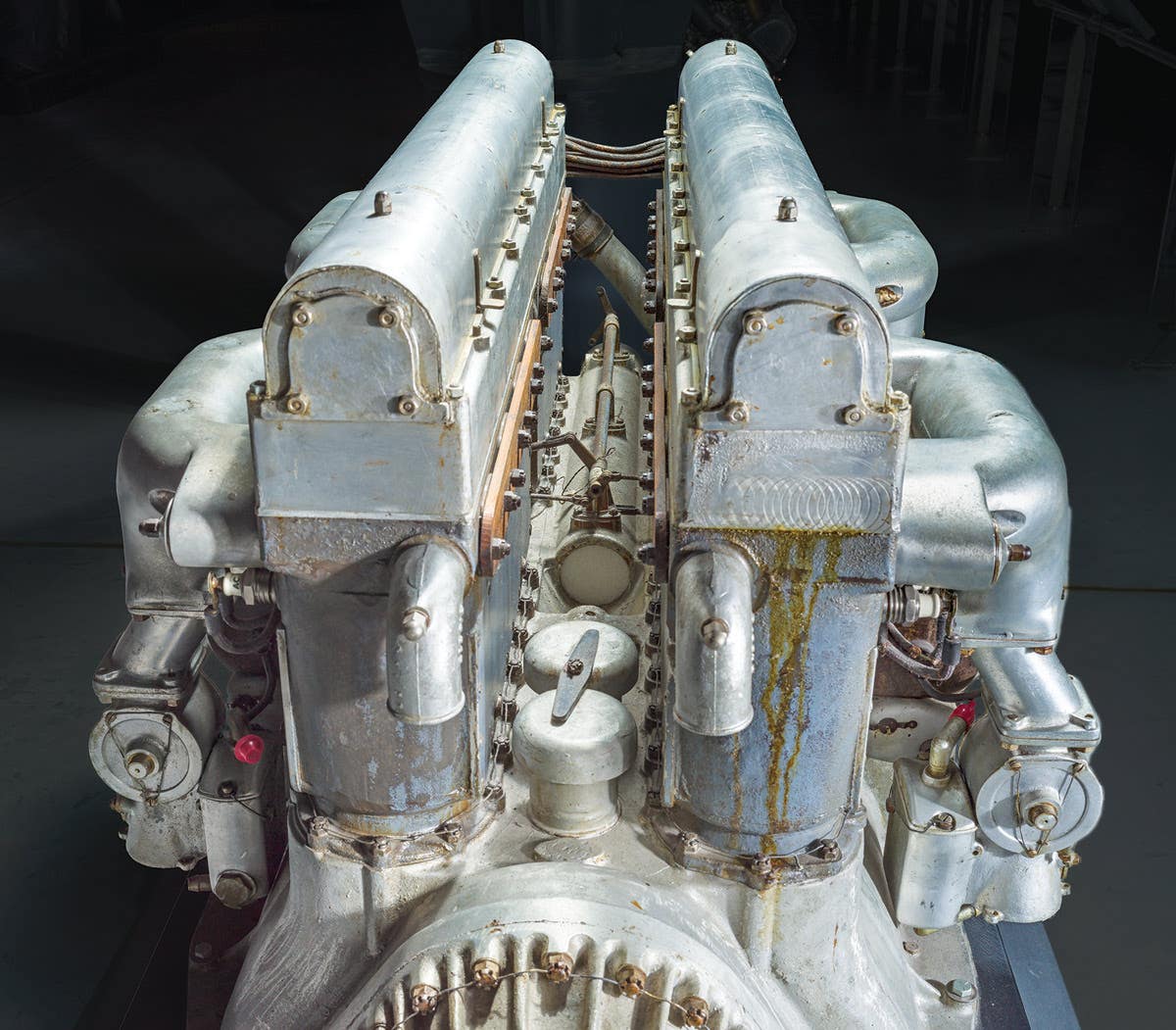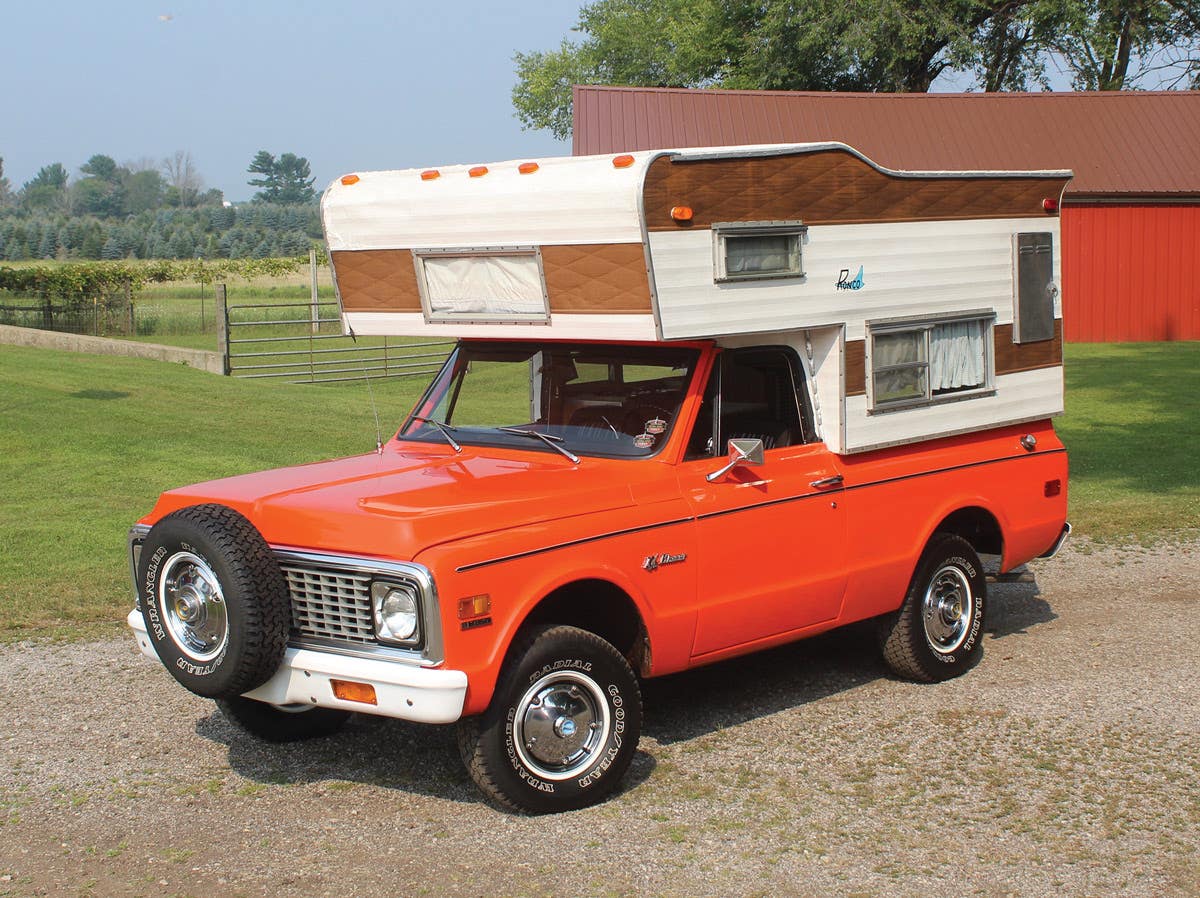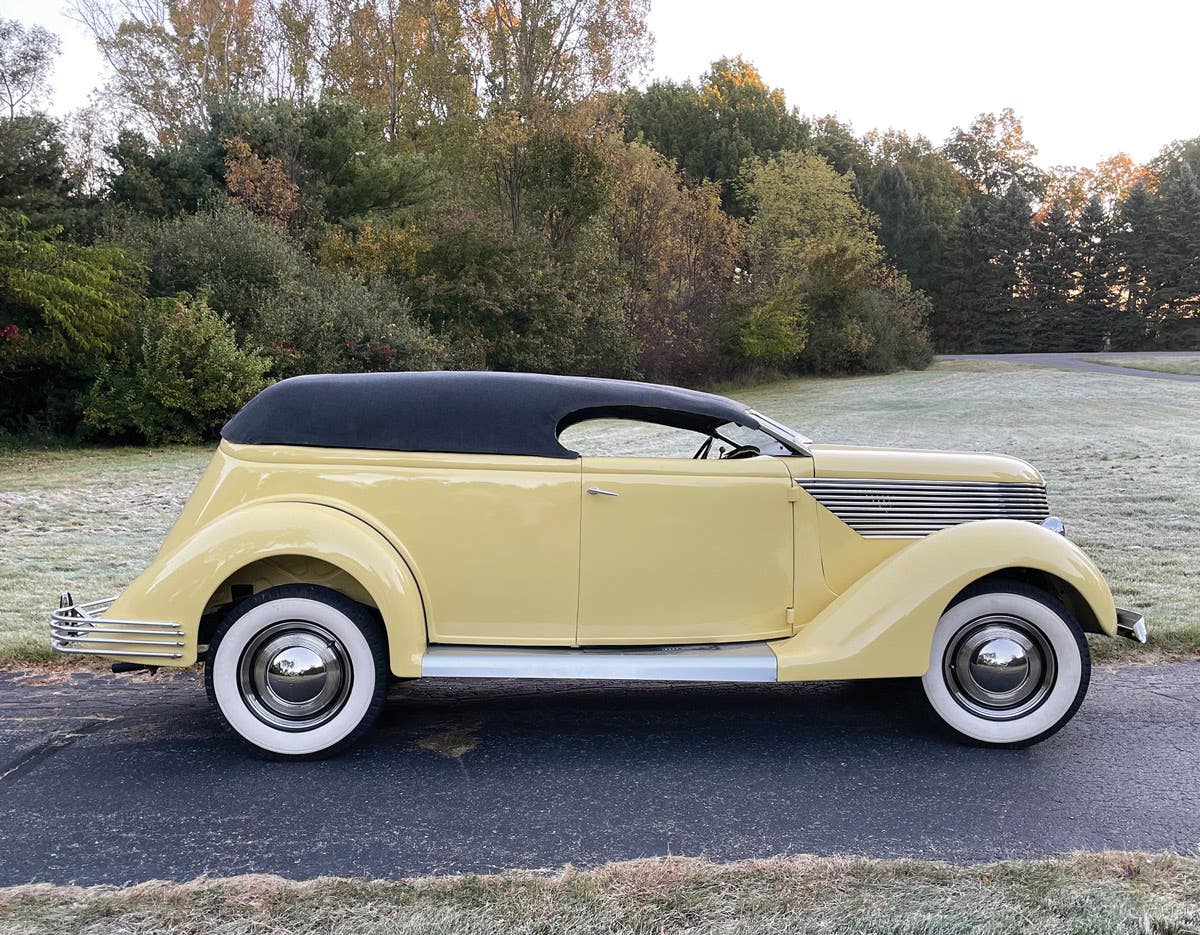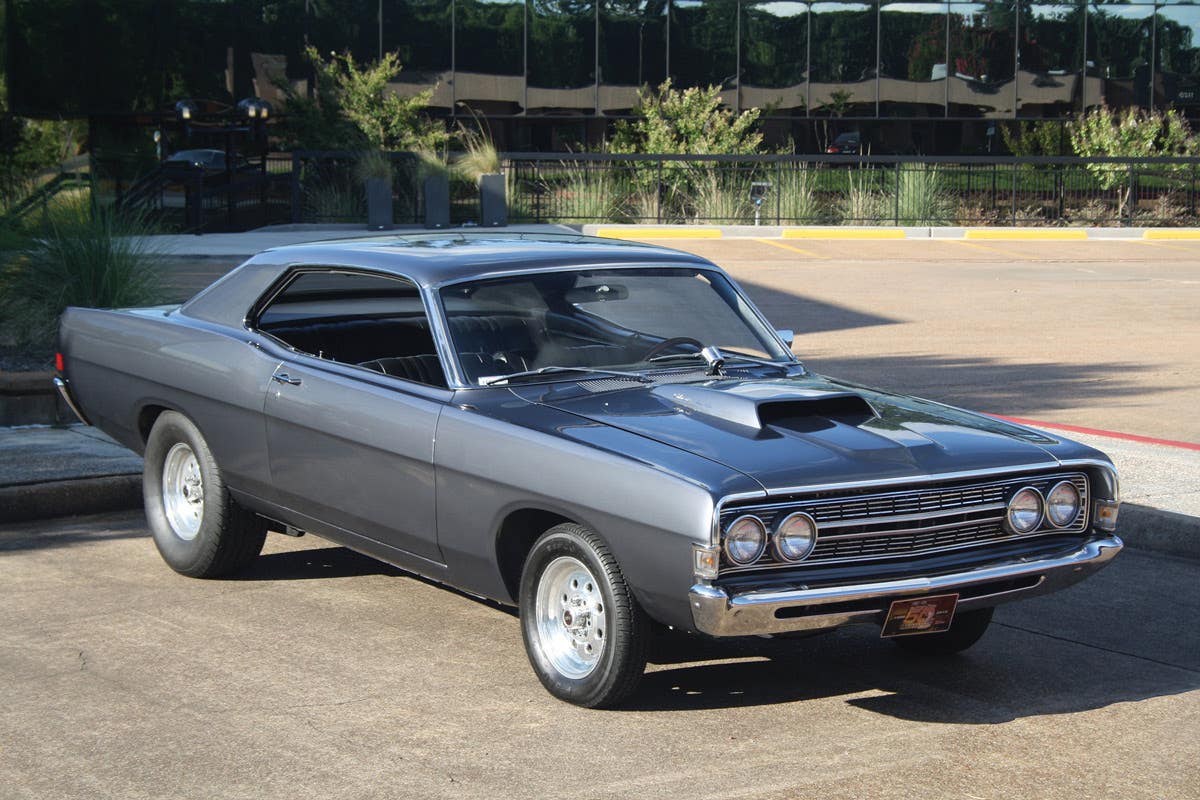The Volvo in Ford’s Clothing
When Volvo’s automotive stylists designed the company’s PV444 two-door sedan, the predecessor of today’s subject car, It was suspiciously close to the styling of the 1942-1948 Ford Deluxe Tudor.
foothold in the United States as the car was quite successful here into the 1960s. Patrick R. Foster
When Volvo’s automotive stylists designed the company’s PV444 two-door sedan, the predecessor of today’s subject car, I don’t know whether or not they deliberately copied the styling of the 1942-1948 Ford Deluxe Tudor, but if it wasn’t intentional, it’s a highly suspect “coincidence.” Aside from the grilles, and the overall size, the two cars look like sisters. Backing up my “copycat theory” is the fact that the next all-new model, the Volvo 122, looks an awful lot like a 1960 Rambler American. Apparently, back then, the Swedes loved American car styling. Perhaps they thought copying it would help their products sell better.
Whatever the case, the Volvo PV444 was a decent automobile for its time. Its successor, the PV544, was even better and, despite its vintage styling, was enthusiastically embraced by American buyers.
Volvo was founded in Gothenburg, Sweden, in 1926, and had been interested in export markets right from the beginning, exporting some 2,632 cars out of its first-year production of 6,525 vehicles. Volvo sometimes styled its early cars similar to American models it admired: the 1935-1938 Volvo PV36 “Carioca” bears a strong resemblance to the advanced-but-unlucky Chrysler Airflow series.
Because Sweden was a neutral country during World War II, Volvo automobile production was able to continue during the war years, although material shortages limited the number of cars that the company could build.
After the war, Volvo began producing the new PV60, a large, stylish four-door sedan that remained in production until 1950. But in 1947, Volvo added a new, smaller car it dubbed the PV444, an attractive two-door sedan that resembled Ford’s concurrent models. Powered by an economical 1,414cc four-cylinder engine, its lower cost made it more attractive to families than the larger PV60, especially in European countries struggling to rebuild their postwar economies. In time, a two-door station wagon joined the line.
In 1956 Volvo began selling its cars in the United States through several distributors, one on the West Coast, one in Detroit and one in New Jersey. Eventually realizing the huge importance of the U.S. market, the company took over U.S. distribution in 1959, establishing Volvo Distributing in Englewood Cliffs, N.J., a place where many other European import companies had already settled. That same model year, Volvo introduced a revised and upgraded car series, and the subject of this column: the doughty and beloved Volvo PV544, a two-door sedan based on the PV444. Since the new car came only as a sedan, the company decided to continue offering the PV444 station wagon until dropping it at the end of the 1960 model run.
The new PV544 featured many improvements over its predecessor. The new windshield was larger, slightly curved and one-piece, unlike the PV444’s smaller, split windshield with flat glass panes. The PV544’s windshield pillars were thinner for better visibility. Rear windows were larger, too, as were the new taillamps. Interior improvements included a roomier rear seat, new instruments set in a now-safety-padded instrument panel, a new steering wheel and a handbrake lever relocated to between the seats for easier use.
Riding a relatively long (for an import car) 102.5-inch wheelbase, the new Volvo could fit four passengers in solid comfort, five in a pinch. Overall length was a compact 177 inches. The brakes were hydraulic drums all around and were improved this year to require less pedal effort. Steering was worm and roller.
The Volvo’s front suspension consisted of control arms with coil springs, while the solid-rear-axle suspension used radius rods, a track rod and coil springs for a controlled, firm-yet-smooth ride. Volvo’s U.S. distributor offered beefier suspension parts through its dealers so enthusiasts could upgrade their cars for better handling, or even competition use, in which the Volvo did well.
American buyers had indicated that they wanted good performance along with Volvo’s fuel efficiency, so the PV544 was fitted with Volvo’s new 1.6-liter Sport engine, an overhead-valve, cast-iron-block unit with three main bearings. This rugged four produced 85 hp at 5,500 rpm and 87 lbs.-ft. of torque at 3,500 rpm. A three-speed manual transmission with floor shifter was the only transmission initially offered. The Port of Entry (P.O.E.) price was $2,330, roughly the same as the prior PV444, and $160 less than that year’s PV444 station wagon model.
Before long, a four-speed manual transmission became standard and, surprisingly, the three-speed manual became an option for those who wanted to do less shifting.
With its compact size and unitized steel body, the PV544 weighed only 2,140 lbs., so performance was better than expected. If pushed, the new car could hit a top speed nudging 95 mph. Fuel economy of 25-35 mpg was reported.
The PV544 was well-received by both the press and public, and Volvo reported sales of more than 18,000 cars in the United States during 1959.
There was little change for 1960 as the company focused on launching an all-new series of cars called the 122S, a sedan about the same size as the PV544 and sharing the same engine and transmission. The big difference was the 122S had four doors and more modern styling. As mentioned earlier, it resembled the 1960 Rambler American, which coincidently introduced a four-door model that year. It’s my belief that Volvo intended for the new series to replace the PV544 in a short time, but the older car’s popularity was such that it continued in production for several more years, with improvements and upgrades occasionally introduced. In 1961, new contoured front bucket seats debuted along with a smoother-shifting four-speed transmission. The following year, Volvo introduced its new 1,778cc B18D four-cylinder engine that bumped horsepower to 90 units.
Volvos quickly earned a reputation for durability and long-life, which owners proudly trumpeted whenever someone asked about their cars. The company also had a reputation for safety, which it pushed heavily in print advertising. The cars themselves were higher priced than many other imports, but their larger size and sturdiness justified paying the high price, at least to a great many Americans. In 1963, for example, the PV544 was priced at $2,295 while a Saab 96 was just $1,895, a Renault R8 sedan was $1,795, and the base Rambler American two-door sedan was $1,846.
In its final iteration, the 1964-1966 models, the PV544 was given a slight facelift with parking lamps moved below and farther out from the headlamps, and front fenders now featured a horizontal chrome molding. The final year of importation was reportedly 1965, but leftover models were apparently still being sold into 1966 — and one reference guide claims even into early 1967 as well. By the end, the list price was $2,330, a pretty fair bargain for a pretty decent car.
But all good things come to an end, and that was true for the PV544. Buyers began to migrate to the more modern-looking 122S. Yet despite its lumpy, throwback styling, the PV544 retained a large fan base that mourned its passing. The car remains popular today among collectors, and why not? It has great ’40s styling, it’s easy to work on and it’s fun to drive, so it checks a lot of boxes on most collectors’ lists.
If you think you want to add a PV544 to your stable, they’re fairly easy to find. Unless you’re a welder, try to find one that’s relatively rust-free. Parts are generally easy to find, and service is very much straight-forward. I’ve done routine maintenance on many of these old Volvos with no problems.
A quick search of the internet found several very attractive drivers, with decent mileage, for less than $15,000, and that’s what I would go for so I could enjoy it from day one. You, on the other hand, may prefer a fully restored example, or maybe a cheap fixer-upper. Just look around and I think you’ll find the right one in a short time. Good hunting!
If you like stories like these and other classic car features, check out Old Cars magazine. CLICK HERE to subscribe.
Want a taste of Old Cars magazine first? Sign up for our weekly e-newsletter and get a FREE complimentary digital issue download of our print magazine.



